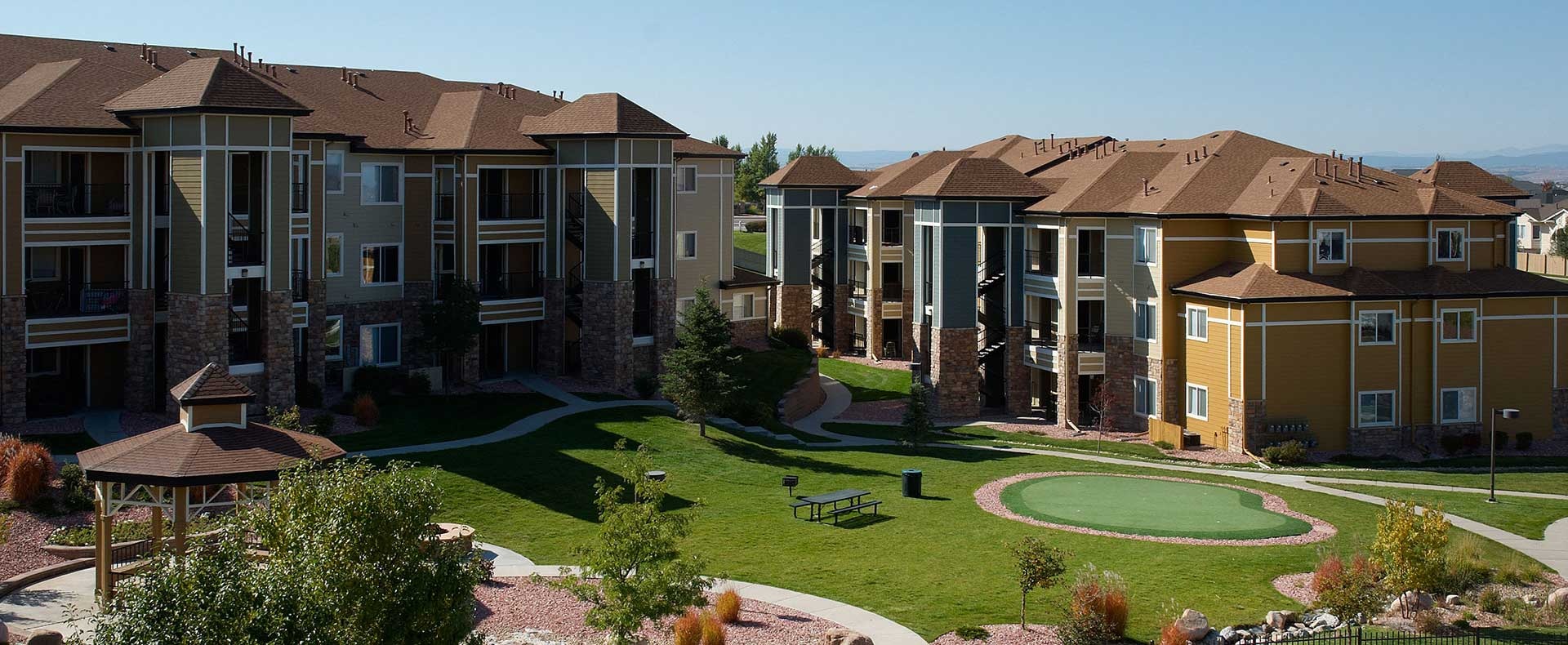Once you make your connections with lots of good syndicators who have met your screening requirements, you will start receiving offers to participate in investment opportunities on a regular basis. I seem to get several each and every week in my email inbox. Most look too good to pass up, but with so much to choose from, you need to exercise discipline and only choose the best of the best.
This article will be less of an article and more of a quiz of what you have learned so far. Before reading this however, please make sure you have read and understand the following:
The Syndication Offering – What to Expect During an Investor Presentation
Make an Extra Income Outside of Your Day Job – Without Becoming a Landlord
Reviewing the Business Plan for a Syndication – Does it make sense to invest?
Forced Appreciation – How It Works and Why We Like It
Preferred Return vs. Non-Preferred Return – Which One Should You Pick?
7 Smart Hacks For Analyzing Real Estate Investments – Using Data to Verify Profit Potential
Understanding Returns – What Are CoC, IRR and AAR and How Do They Differ?
How to Earn Passive Income from Real Estate
What does a good syndication opportunity look like?
For each round, I will be giving you 2 opportunities to choose from. Do your best to pick, as there is a lot of subjectivity involved at times. Although both examples might make great investments, there are things that need to be considered. In the answer portion, I will explain why I chose one over the other. Note that the Annual Average Return is calculated with the effect of appreciation.
Round 1
Both class C+ properties were built in 2004, have 150 units, have similar floorplans, and have light value-add business plans. The main difference is where the properties are located. Property A is in a lower-income area with slightly higher crime, and the syndicators plan to leverage the property to 70% LTV, compared to the 65% LTV at property B.
| A | B | |
| Purchase Price | $6,000,000 | $5,900,000 |
| Percentage of Debt Financing | 70% | 65% |
| Expenses as Percentage | 50% | 50% |
| Average Monthly Rent | $800 | $767 |
| Annual Rent Increase | 3% | 3% |
| Median Area Annual Income | $33,600 | $45,600 |
| Holding Period | 5 Years | 5 Years |
| Member Equity | 80% | 80% |
| Average Cash on Cash Return | 15.6% | 13.9% |
| Average Annual Return | 33.4% | 28.1% |
| Debt Coverage Ratio | 2.40 | 2.51 |
| Preferred Return | 7.5% | 7.0% |
| Total Return ON Investment | 78.0% | 69.6% |
| Equity Multiple (Return OF Investment) | 2.05x | 1.84x |
| IRR | 27.1% | 23.7% |

Answer: B
Property B is the safer bet. While property A has a better IRR and equity multiple, one of the most detrimental worries is the level of income for the area. A good rule of thumb is that rents should not exceed 25%-30% of the median income. Rent higher than this can be unsustainable, and increases risk. This can sometimes be mitigated by an exceptional property management team and higher marketing budget. Also, the debt is less, as a percentage, for property B, minimizing risks of debt servicing.
Round 2
Both properties have a light value-add business plan, with a projected exit selling price of property D outpacing property C. The operating expenses for property D are a bit lower than property C because the syndicator operates another in the area and can take advantage of economies of scale. The underwriting on property C is a little more conservative with a slightly higher vacancy factor. Property C offers a preferred return, and a lower LTV.
| C | D | |
| Purchase Price | $11,300,000 | $11,200,000 |
| Exit Selling Price | $14,669,860 | $16,633,362 |
| Vacancy | 10.5% | 10.0% |
| Percentage of Debt Financing | 70% | 72% |
| Expenses as Percentage | 50% | 47% |
| Average Monthly Rent | $1,250 | $1,183 |
| Annual Rent Increase | 3% | 2.5% |
| Median Area Annual Income | $62,400 | $64,800 |
| Holding Period | 4 Years | 7 Years |
| Member Equity | 75% | 75% |
| Average Cash on Cash Return | 11.2% | 10.7% |
| Average Annual Return | 21.7% | 23.8% |
| Debt Coverage Ratio | 1.98 | 1.96 |
| Preferred Return | 7.5% | 0.0% |
| Total Return ON Investment | 44.6% | 74.7% |
| Equity Multiple (Return OF Investment) | 1.54x | 2.09x |
| IRR | 19.7% | 18.5% |

Answer: C
This is not as much as a no-brainer as it seems. Sure, the IRR on property A is a little higher, though the equity multiple is much lower. The average annual return is also lower. But when you take into account that the holding period is a little more than half of that for property B, it allows you to reinvest sooner, helping you compound your returns.
Round 3
Both of these class B properties are in a nice area of Oklahoma City. The schools are great and job growth keeps getting better. The properties are each going acquired and operated with a heavy value-add plan in mind. The sponsors plan to spend an average $6,500 on each of the 150 units. They both plan on an 8-year hold, though property F will be refinancing at the 4-year mark, cashing out 76% of the investment. Because of the refinance the IRR and the AAR will be artificially low. (If the cash out could be 100%, that would be considered an infinite return for 4 years.) The construction and renovation will begin immediately after escrow, and will continue for 18 months, allowing a significant rent bump in year 3. The returns are very similar. Which one do you choose?
| E | F | |
| Purchase Price | $10,400,000 | $10,500,000 |
| Percentage of Debt Financing | 70% | 72% |
| Expenses as Percentage | 49% | 59% |
| Average Monthly Rent | $1,063 | $1,042 |
| Annual Rent Increase | 2% | 2% |
| Value-Add Rent Increase in Year 3 | 8% | 8% |
| Median Area Annual Income | $62,400 | $64,800 |
| Holding Period | 8 Years | 8 Years |
| Member Equity | 75% | 90% |
| Average Cash on Cash Return | 9.2% | 13.9% |
| Average Annual Return | 19.2% | 14.9% |
| Debt Coverage Ratio | 2.29 | 1.25 |
| Preferred Return | 0.0% | 12.0% |
| Total Return ON Investment | 73.2% | 24.7% |
| Equity Multiple (Return OF Investment) | 1.92x | 2.09x |
| IRR | 15.1% | 14.9% |

Answer: E
Although nearly cashing out early and going near infinite, seems like a good idea, in this case, most of the profit is from the sale, so it is not like you are getting 76% of your money back at year 4. Because the returns are similar, you have to look deeper. Notice that the debt is greater on property F for the first 4 years, but not by too much. The big thing that sticks out like a sore thumb to me is the debt service coverage ratio. 1.25 is about the minimum most lenders will allow. What happens if there are unforeseen expenses or vacancies? At nearly 60%, the sponsor clearly has high expenses to begin with and I would have expected them, especially at this point in the process, to have brainstormed ways to reduce spending. This is too slim of a margin, where property E has a comfy 2.29, and this is the major reason for my decision.
Round 4
This last round is a toughie. They are class B- properties, again in the same metropolitan area in desirable and affluent neighborhoods. The value-add plan calls for a medium amount of renovations as some of the units have already been upgraded by the current owner. On the units that have been renovated, a rental premium has been realized, so this proof of concept will carry over to the remaining classic units. The area for property G has a higher median than property H, but the investors in property H will own 5% more of the equity than property G. Expenses are lower in property H, but property G promises a 7% preferred return. The difference in hold times is 2 years. My-o-my…Which one?
| G | H | |
| Purchase Price | $16,700,000 | $16,800,000 |
| Percentage of Debt Financing | 70% | 70% |
| Expenses as Percentage | 50% | 45% |
| Average Monthly Rent | $1,438 | $1,433 |
| Annual Rent Increase | 2% | 2% |
| Value-Add Rent Increase in Year 3 | 6% | 6% |
| Median Area Annual Income | $83,040 | $82,080 |
| Holding Period | 3 Years | 5 Years |
| Member Equity | 70% | 75% |
| Average Cash on Cash Return | 8.4% | 8.3% |
| Average Annual Return | 22.4% | 23.7% |
| Debt Coverage Ratio | 1.98 | 2.14 |
| Preferred Return | 7.0% | 0.0% |
| Total Return ON Investment | 25.2% | 41.7% |
| Equity Multiple (Return OF Investment) | 1.53x | 1.91x |
| IRR | 20.4% | 19.2% |

Answer: H
These are both shiny objects, but I think an investment in property H has a better chance of succeeding. Not only because of the lower expenses, but also the higher percentage of equity. Since there is no preferred return, more money is also going to the sponsor, rewarding them for great performance (if it happens). When you look at the equity multiple, property H does a little bit better per year than property G. And then there’s the time horizon. It looks like property G is almost a flip. The sponsors expect to do everything in their plan within 3 years. If something goes wrong with the timing of all the projects, they could be going well into year 4, which could cause the IRR to fall.
Final Thoughts
I hope that you found this helpful. Let me know in the comments below. You might even be able to talk me into doing this again.


